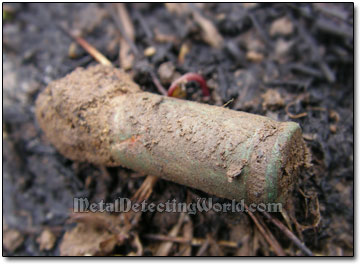Part II: Revisiting the "Virgin" Site of Swedish Tavern, page 56
Metal Detecting Old Russian Copper Coins and WW2 Relics
Next coin I found was even larger than the previous one.
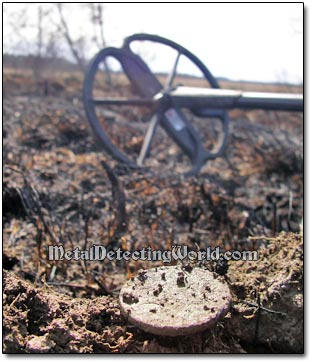
Unfortunately the coin was too thick to be a 17th century copper. I realized that I did not want to spend a few precious hours of day-light for digging ordinary coins that were even 200 years younger than the abundant Swedish copper coins. I had already started to feel indifferent to the latter. I wish Irina was not stubborn, moved onto this spot, and experience the beginner's excitement while digging the "modern" coins, so I could explore other spots of this site.
Russian 1858 5 Kopeks ("Pyatak"), Emperor Tsar Alexander II
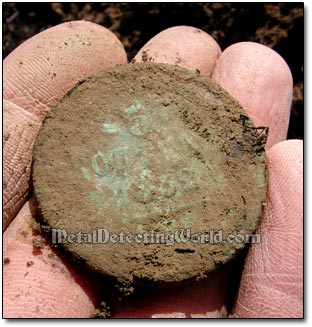
That was what I did. I left the "village outskirts" for later and moved back to the krog site. It somehow attracted me more. And I did not miss my share of excitement, negative this time, when I dug up a small artillery projectile. No, I did not "fear and desire this object at the same time" as the negative excitement is defined in classic psychological works. I only feared it. (read more on dangerous WW2 relics here)
WW2 Reminder
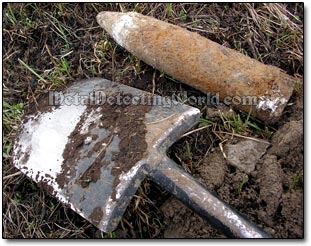
A good thing was that I found a coin on the side wall of the same hole after I scanned it again.
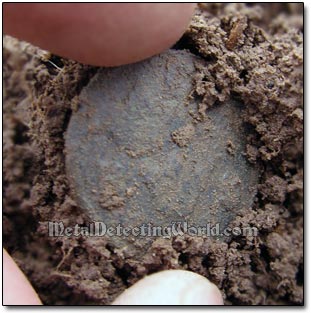
Of course, it was just another Swedish ordinary coin, but it still felt good to recover a coin under such circumstances.
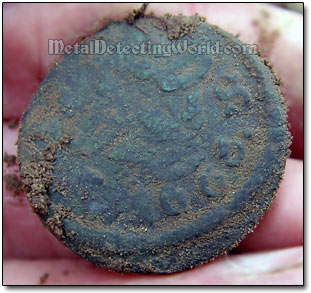
One of 35 Million 1666 Halvörings
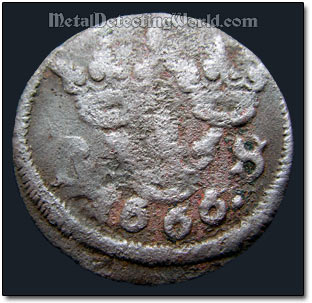
A big nuisance were the unfired rounds of the WW2 sub-machine gun or a pistol. Because of the bullets that were rusty and still attached to the brass casings, these rounds would give a broken, "mixed" or low-conductivity signal as if they were thin silver hammered coins, and, therefore, required attention. Many times I was very close to give up on them.
An Unfired Cartridge of WW2 Sub-Machine Gun
